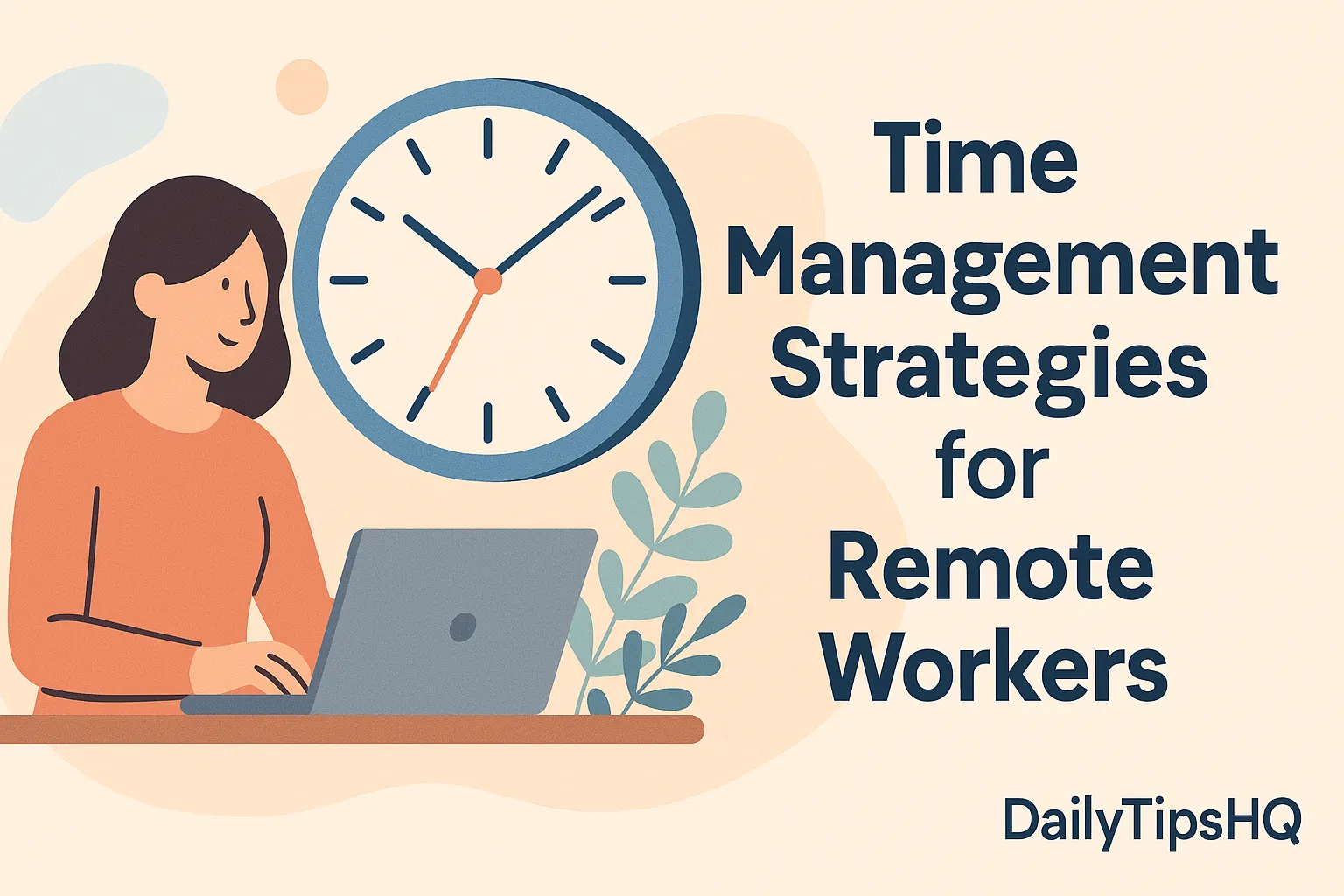Managing time effectively is a challenge for most people—but when you’re a remote worker, the lines between personal and professional life blur quickly. Without a structured office environment, it’s easy to drift into bad habits, lose focus, or burn out trying to “always be available.” In this guide, we’ll break down proven time management strategies tailored specifically for remote work success.
⏳ Why Time Management Matters for Remote Workers
Remote work offers flexibility, but that freedom requires discipline. Poor time management can lead to:
-
Missed deadlines
-
Poor performance
-
Work-life imbalance
-
Increased stress and burnout
Without clear boundaries or routines, remote workers can find themselves either overworking or underperforming. That’s where structured strategies make all the difference.
⚠️ Common Time Wasters When Working Remotely
Before improving your time management, you need to identify what’s wasting it:
-
Constant notifications (Slack, WhatsApp, email)
-
Unscheduled meetings or calls
-
Multitasking without a clear priority
-
Poor work environment or distractions at home
-
Lack of task tracking
✅ Proven Time Management Techniques
1. Time Blocking
Dedicate chunks of time to specific tasks. Use Google Calendar or Notion to block out focused work, meetings, breaks, and deep work.
2. Pomodoro Technique
Work in 25-minute intervals followed by a 5-minute break. After four sessions, take a longer 15-30 minute break. Tools like Focus Booster help automate this.
3. The Eisenhower Matrix
Prioritize tasks by urgency and importance:
-
Urgent & Important → Do Now
-
Important but Not Urgent → Schedule
-
Urgent but Not Important → Delegate
-
Neither → Eliminate
4. Daily Top 3
Begin each day by identifying the 3 most important tasks to complete.
5. Batch Similar Tasks
Group repetitive or similar tasks (like emails, reports, meetings) into a single time slot to stay in flow state.
🧱 How to Set Boundaries When You Work from Home
Remote workers often struggle with disconnecting. Setting boundaries helps:
-
Define clear working hours
-
Use a dedicated workspace
-
Communicate availability to your team
-
Log off after work hours—physically and digitally
🛠️ Tools That Help With Time Management
Here are some helpful apps:
-
Toggl Track – Time tracking
-
Clockify – Detailed time reports
-
Notion – All-in-one task/project manager
-
RescueTime – Tracks how you spend your day
-
Google Calendar – Perfect for time blocking
🌿 Final Thoughts
Time management is not just about productivity—it’s about sustainability. When you manage your time well, you preserve energy, avoid burnout, and make room for both professional success and personal happiness. Remote work gives you freedom; your task is to build a system that keeps it functional.
📌 FAQ
What are the best time management techniques for remote workers?
Time blocking, the Pomodoro technique, and the Eisenhower Matrix are some of the most effective methods.
What’s the biggest time-wasting habit in remote work?
Multitasking without prioritization and constant digital distractions are top culprits.
Should remote workers have fixed working hours?
Yes, or at least consistent core hours. This helps with boundaries and team communication.
How do you stay focused while working from home?
Use time-blocking, turn off unnecessary notifications, and create a distraction-free environment.

